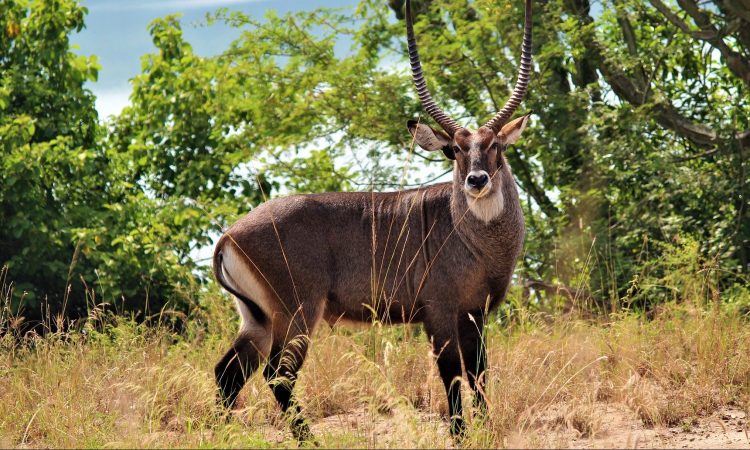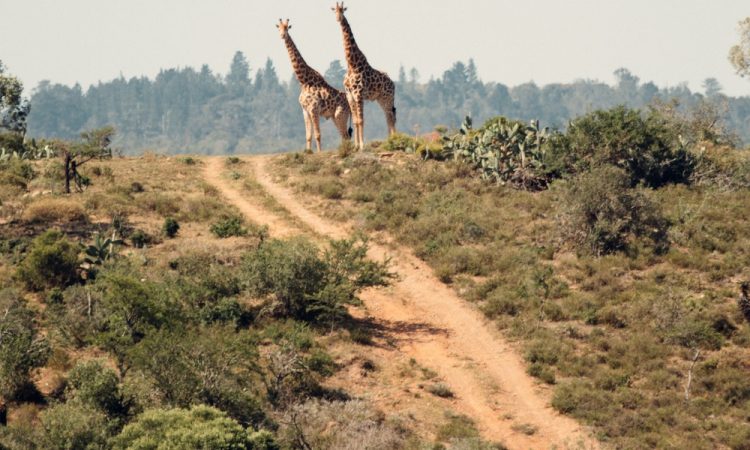Queen Elizabeth National Park, formerly known as Kazinga National Park is located in the western part of Uganda. It is apparently the country’s most visited tourist destination, a park you should visit at all costs on your Uganda safaris. The park is characterized by savannah grasslands, acacia woodland, swamps, and forests. Queen Elizabeth National Park covers an area of 1,978-kilometers squared, making it the second largest national park in Uganda. The park was first founded as Kazinga National Park in 1952 but the name was changed two years later when the Queen of England, Elizabeth visited the park.

Queen Elizabeth National Park is home to 95 mammalian species and 612 species of birds. There are many stunning craters like Katwe, lakes, the Kazinga channel, Kyambura Gorge, rolling hills and the views from the ranges of the mighty mountains of the moon that make Queen Elizabeth National Park a great gem.
The savannah plains of Queen Elizabeth National Park are home to various animals that tourists can see while on game drives. Some of these include lions, leopards, elephants, warthogs, bushbucks, reedbucks, waterbucks, Ugandan Kob, giant forest hogs, buffalos, hippos, crocodiles and many others. The Ishasha sector of the park is home to the famous tree climbing lions, a species of lions that can also be spotted in Lake Manyara in Tanzania and nowhere else in the world.
Hiking and nature walk at the park can be done along the Ishasha River and Maramagambo forests. These walks give tourists chances of encountering wildlife on foot. Such wildlife includes warthogs, bushbucks, primates like the black and white colobus monkeys not forgetting the many species of birds.
Bird Watching in Queen Elizabeth NP
Queen Elizabeth National Park is a birders paradise. Bird enthusiasts can explore up to over 600 species of birds. Some of the birds found in the park include shoebill stork, African skimmer, papyrus canary, martial eagle, pink-backed pelicans, Black-rumped buttonquail, Chaplin’s flycatcher, collared pratincole, palm nut vulture, Pel’s fishing owl, western banded fish eagle, spotted red shock, black bee-eater, Caspian Plover, African finfoot, Heuglin’s Gull, red chested sunbird, common sand martin, great white pelican, great blue turaco, Rufous-bellied Heron, broad billed roller, crab plover, and African hobby among others.
Boat Cruise on the Kazinga Channel
Taking an afternoon boat cruise is one of the best things you shouldn’t miss in Queen Elizabeth National Park. The cruise is done at the magnificent Kazinga channel, a place that boasts as the longest natural channel in the world, connecting Lake Edward and Lake George. The channel’s shores are highly concentrated with wildlife as they quench their thirst from the scorching sun. Seeing elephants on a boat cruise are a must with lots of water birds in the air. Hippopotamuses and crocodiles get very close to your boat but cannot harm you. You will get to see them close.
Chimpanzee Trekking at Kyambura Gorge
Kyambura Gorge is located in the Kyambura Sector of the park. It derives its name from River Kyambura, a river that passes through the vegetation and provides water to wildlife. The gorge is the longest chasm in East Africa, with an underground forest that is 100 meters underneath the Kichambwa rift escarpment. This gorge is endowed with chimpanzees. It’s an ideal place for chimpanzee trekking while in Queen Elizabeth National Park. Inside this gorge are also other primates like Olive baboons, vervet monkey, blue monkeys, and black and white Columbus monkeys to mention a few.
The Equator & Culture
Queen Elizabeth National Park is crossed by the Equator. Don’t forget to visit the equator while you are here. You have a great opportunity that few can do; that is standing in the middle of the world with both legs on the Northern and Southern Hemispheres respectively. This spot is very good for photo shoots. Regarding culture, it’s always good to visit natives while on your safari in Uganda. People have different ways of life, unique cultures and so much more. You can get entertained with Kikorongo Equator Cultural Performers as they energetically show off their local traditional dances. You also get to hear the deep tunes of African music.
Katwe Salt Mines & The Bat Caves
Lake Katwe is famous for its salt mining industry ever since the 15th century. The people here still use the local traditional methods of mining to extract salt. You can visit and see the process of how they mine salt. You will learn a lot. The lake is just a few kilometers from the Kabatoro gate of the park. The bat cave at Queen Elizabeth National Park is well known for its numerous bats. These bats are found in the cave alongside their predators, “pythons”. There is a viewing room where you can clearly observe the bats and watch pythons catching their prey.
Accommodation
Queen Elizabeth National Park has got a variety of accommodation options ranging from luxury, mid-range, and budget. Some of the lodges you can sleep in are Jacana Safari Lodge, Ishasha Jungle Lodge, Elephant Plains Lodge, Enjojo Lodge, Enganzi Game Lodge, Park View Safari Lodge, Marafiki Lodge, Buffalo Lodge, Mweya Safari Lodge, Queen Elizabeth Bush Lodge, Kitandara Hippo Hill Camp, Emin Pasha Lodge, Katara Lodge, Kyambura Gorge Lodge, lhamba Safari Lodge, Simba Safari Lodge, and Kingfisher Lodge Kichwamba to mention a few.
Queen Elizabeth National Park is located near the equator. The climate is warm throughout the year but some months are better than others. The best time to visit is in the dry season of May to September and December to January when the grass is short and wildlife can easily be spotted on the plains. Queen Elizabeth National Park can be reached from Kampala within a 5-6 hours drive by road through Mbarara road. It is 420 kilometers away through the Mbarara Road and 410 kilometers away through the Fort Portal road.






